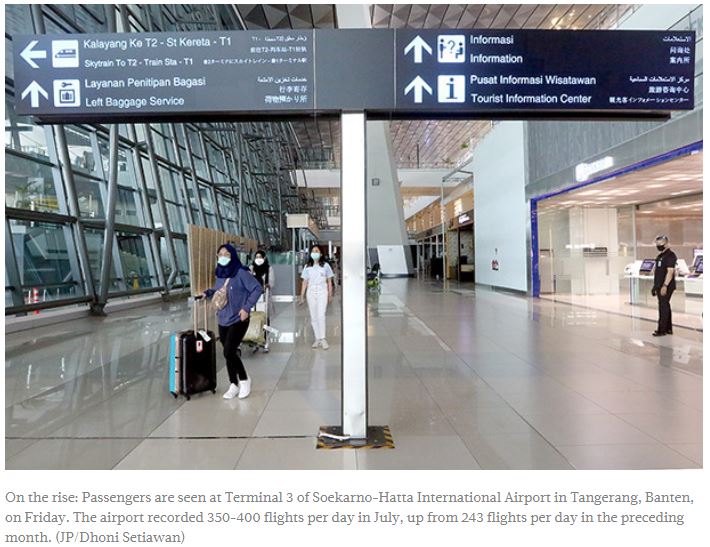Indonesia to have world’s fourth-largest air passenger market by 2039: IATA
The International Air Transport Association (IATA) projected Indonesia’s air passenger market to become the fourth-largest globally by 2039, jumping from 10th position in 2019 thanks largely to travel demand from the country’s growing middle class, according to an official.
IATA Asia Pacific member external relation assistant director Kelvin Lee said on Tuesday that the growth of the middle class in Indonesia and Southeast Asia was making the region a hotspot for air passenger market growth over the next two decades, surpassing conventional markets such as Europe and Northern America.
“We see that the Asia Pacific will become the region where air travel is expected to grow very strongly and ASEAN plays a key role in the strong growth,” he said in an online webinar held by Malaysia-based think tank Institute for Democracy and Economic Affairs (IDEAS).
IATA expected the Asia-Pacific region to have a 4.5 percent compound annual growth rate (CAGR) over the next 20 years, far above the traditional aviation industry market of Northern America and Europe, which is estimated to see a CAGR of 1.6 percent and 1.8 percent, respectively.
China is also projected to surpass the United States in becoming the world’s biggest air passenger market in 2039, while India is set to jump to third place that year from fifth place in 2019, the organization’s data shows.
According to the World Bank’s “Aspiring Indonesia: Expanding the Middle Class” report, Indonesia’s middle-class population has expanded over the last 15 years from just 7 percent of the population to 20 percent currently, with 52 million Indonesians currently belonging to the group.
Despite the burgeoning middle-class population, Indonesia saw an 18.54 percent year-on-year (yoy) decline in domestic air passengers last year to 76.7 million people, according to Statistics Indonesia (BPS) data.
The COVID-19 pandemic has further pressured domestic passenger travel demand this year, with only 23.5 million passengers flying as of September, or 58.33 percent lower compared to the same period last year. Meanwhile, the number of foreign air passengers in the same period plummeted 74.54 percent yoy to 3.5 million people.
The Indonesian National Air Carrier Association (INACA) has projected the number of air passengers to only reach around 45.8 million by the end of 2020, a 40 percent drop from last year.
Kelvin said ASEAN member countries should also take additional steps to harmonize the regulation on the aviation industry among the region’s member countries, as well as take a more liberal market approach in order to boost the sector’s development in the future.
“In order for ASEAN to fully reap its travel growth potential, the region needs to do more in terms of regulatory harmonization to deal with key challenges such as very diverse regulatory maturity. Furthermore, we also expect government controls to remain conservative,” he said during the discussion.
The 10-member bloc implemented the ASEAN Single Aviation Market (ASAM) in 2015 to increase regional connectivity.
With the agreement, airlines in the region are allowed the fifth freedom of the air, which entails the right to carry traffic between two foreign countries with services starting or ending in the airline’s own country.
However, several member states, including Indonesia, are reluctant to take further steps by opening its domestic market to foreign airlines in an effort to protect their local airline industry.
Prasetiya Mulya University aviation law researcher Ridha Aditya Nugraha said Indonesia had the strictest minimum operating aircraft regulation, which required an airline to own a minimum of five aircraft and control another five. The requirement was eased by the newly passed Law No. 11/2020 on job creation.
The Job Creation Law is intended to cut bureaucratic red tape to boost investment, among other targets.
“Investment-friendly provisions among ASEAN member states should lead to the establishment of new airlines and create an environment that supports them. That would bring us seamless air connectivity in ASEAN,” Ridha said during the discussion.
INACA previously welcomed the controversial law, believing it will spur investment in an industry that has been battered by the pandemic.
Source: https://www.thejakartapost.com/news/2020/11/11/indonesia-to-have-worlds-fourth-largest-air-passenger-market-by-2039-iata.html


 Thailand
Thailand




